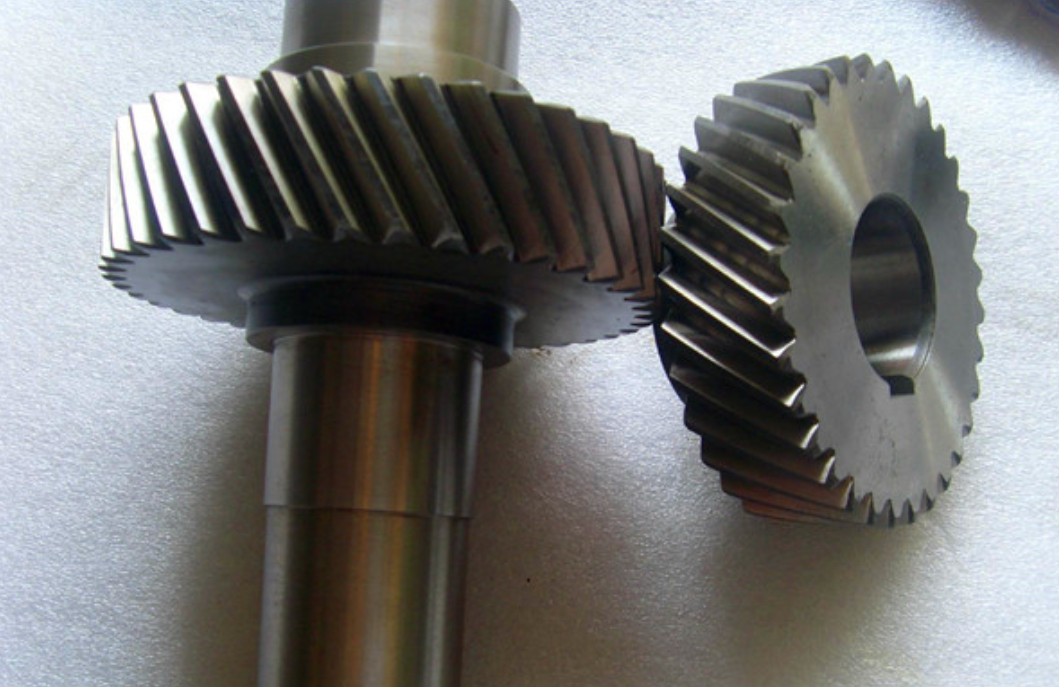This study investigates the coupled effects of tooth modification and friction excitation on the dynamic behavior and noise characteristics of helical gear systems. A systematic approach combining static transmission error optimization, time-varying friction modeling, and acoustic boundary element analysis is proposed to evaluate vibration suppression and noise reduction strategies.

1. Tooth Modification Optimization
The optimal modification parameters for helical gears were determined through Romax simulations, considering three modification types:
| Modification Type | Optimal Parameters | STE Reduction |
|---|---|---|
| Linear Profile | 15μm (pinion), 22.5μm (gear) | 73.7% |
| Parabolic Profile | 15μm (pinion), 22.5μm (gear) | 69.3% |
| Lead Crowning | 4μm (pinion), 1μm (gear) | 68.3% |
The static transmission error (STE) calculation shows:
$$STE = \frac{R_{pinion}}{R_{gear}} \theta_{pinion} – \theta_{gear}$$
2. Frictional Excitation Analysis
The time-varying friction force considering contact line dynamics is expressed as:
$$F_f(t) = \mu \sum_{i=1}^{n} \left[ \frac{F_n(t)}{L_z(t)} (L_{right}^i – L_{left}^i) \right]$$
Where:
- $\mu$ = friction coefficient
- $L_z(t)$ = total contact length
- $L_{right/left}^i$ = right/left contact lengths of ith tooth pair
3. Meshing Stiffness Calculation
The time-varying meshing stiffness for helical gears is derived as:
$$k_m(t) = \sum_{i=1}^{N} k_{dz}^i(t)$$
Where single tooth pair stiffness $k_{dz}^i$ considers profile modification effects:
$$k_{dz}^i = \int_{\theta_{is}}^{\theta_{if}} k_f \frac{b}{\cos\beta_b} d\theta$$
4. Coupled Dynamic Model
The 8-DOF dynamic model incorporates both modification and friction effects:
$$M\ddot{X} + C\dot{X} + KX = F_{mesh} + F_{friction}$$
Key vibration components:
| Direction | Vibration Reduction (Modified vs Unmodified) |
|---|---|
| X (Friction) | 42% amplitude reduction |
| Y (Meshing) | 35% amplitude reduction |
| Z (Axial) | 38% amplitude reduction |
5. Acoustic Radiation Analysis
The boundary element method predicts noise reduction from modification:
| Frequency (Hz) | Noise Reduction (dB) |
|---|---|
| 230 (1×mesh) | 2.0 |
| 460 (2×mesh) | 1.3 |
| 690 (3×mesh) | 3.2 |
The acoustic pressure at field points follows:
$$p(r) = \sum_{i=1}^{N} [C_i^T\{p_i\} + D_i^T\{v_{ni}\}]$$
6. Friction Coefficient Effects
Parametric study reveals friction’s significant impact on noise generation:
| $\mu$ | 1150Hz SPL (dB) | Dynamic TE (μm) |
|---|---|---|
| 0.0 | 83.6 | 3.1 |
| 0.05 | 88.1 | 3.3 |
| 0.10 | 92.1 | 3.5 |
The comprehensive analysis demonstrates that proper helical gear modification combined with friction control can effectively reduce vibration amplitudes by 35-42% and noise levels by 1.3-3.2dB across meshing frequencies. The proposed coupled dynamic model provides an effective tool for optimizing low-noise helical gear designs.
